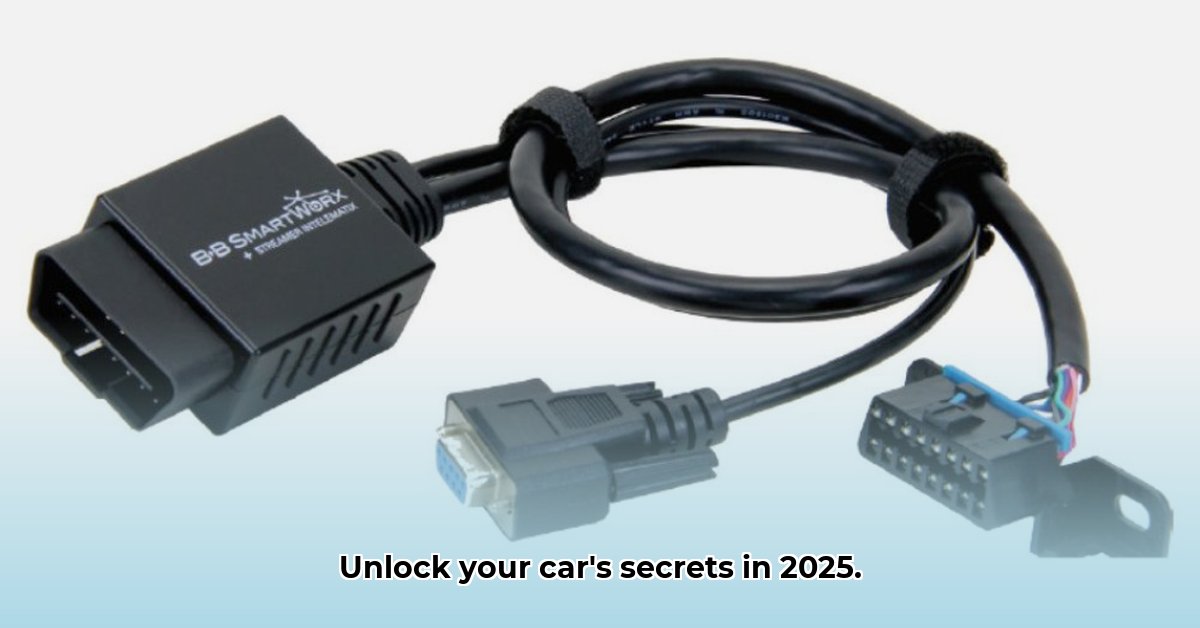
Want to understand your car's health without a mechanic's visit? OBD-II adapters are your key. This guide simplifies choosing the right one, regardless of your technical skill. We'll compare adapter types, highlight essential features, and address data security concerns. Let's get started!
Understanding OBD-II Adapters: What They Do and Why You Need One
An OBD-II adapter acts as a translator between your car's computer and your smartphone or computer. Your car's onboard diagnostics system (OBD) constantly monitors engine performance, transmission, and other systems. An OBD-II adapter plugs into your car's diagnostic port (usually under the dashboard), allowing access to this data.
Why is this useful? Early problem detection prevents costly repairs. It can improve fuel efficiency and even help diagnose that mysterious check engine light. It's also fascinating to see your car's data!
OBD-II adapters vary in capability. Let's explore the options.
Types of OBD-II Adapters: Bluetooth, Cellular, and Wi-Fi – Key Differences
OBD-II adapters differ mainly in how they communicate with your device:
Bluetooth Adapters: These are usually the most affordable. They connect to your smartphone via Bluetooth, providing access to basic diagnostic trouble codes (DTCs) and some engine data. Think of it as a quick car health check. However, Bluetooth range is limited, and compatibility might be an issue with older vehicles.
Cellular (3G/4G/5G) Adapters: These are the most advanced. They use a cellular connection, enabling real-time data streaming, GPS tracking, and remote diagnostics. Imagine a mechanic monitoring your car remotely! Reliability is higher than Bluetooth, but they’re more expensive and may require a data plan or subscription.
Wi-Fi Adapters: Less common, Wi-Fi adapters use your home network. They're great for garage use but are limited by range and require a strong Wi-Fi signal.
Isn't it remarkable how technology allows us to access so much information about a complex system? But which type of connection best suits your needs?
Key Features to Consider in Your OBD-II Adapter
Connectivity is just the start. Consider these crucial features:
App Compatibility: The accompanying app is critical. A good app is intuitive, displays data clearly, receives regular updates, and fully supports your adapter. Verify compatibility before buying.
Data Logging: This records your vehicle's data over time, helping identify trends and potential problems. This is invaluable for intermittent issues. How much data logging capability do you need?
Real-Time Data: See live engine, transmission, and system data. This is excellent for immediate problem identification.
Diagnostic Trouble Code (DTC) Reading: This essential feature translates your car's diagnostic codes into understandable language.
Data Security: Choose a reputable brand prioritizing security. Your driving data is sensitive; protection is essential.
Top OBD-II Adapter Picks for 2025 (A Sampling)
The market is dynamic, with new models constantly emerging. The following is a representative sampling, not an exhaustive list:
| OBD-II Adapter | Connectivity | Key Features | Estimated Price (USD) | Pros | Cons |
|---|---|---|---|---|---|
| Adapter A (Example) | Bluetooth | DTC reading, Basic data (speed, RPM) | $20 - $40 | Affordable, easy setup, good for basic diagnostics | Limited range, fewer features |
| Adapter B (Example) | Cellular (4G LTE) | Real-time data streaming, GPS tracking, advanced diagnostics | $100 - $150 | Comprehensive data, remote monitoring, wider range | Higher cost, requires cellular data, potential subscription fees |
| Adapter C (Example) | Bluetooth + WiFi | DTC reading, data logging, limited remote diagnostics | $50 - $80 | Versatile connectivity, good balance of price & features | Requires stable network connection for both functionality |
Note: Prices are estimates and can vary. Always check current pricing and reviews.
The App Ecosystem: Selecting the Right Software
The app is as important as the adapter. Look for intuitive interfaces, good user reviews, comprehensive feature sets (data visualization, logging, etc.), and frequent updates. A poorly designed app can hinder even the best adapter. How important is ease of use and data visualization to you?
Data Security and Privacy: Protecting Your Information
This is paramount. Your vehicle data (location, driving habits) is sensitive. Choose reputable brands with strong security:
- Data Encryption: Ensures secure data transmission.
- Secure Servers: The company should use secure servers to protect against unauthorized access.
- Transparent Privacy Policies: Review privacy policies carefully.
Prioritize well-established companies and check for security vulnerabilities mentioned in online reviews.
Making Your Decision: Choosing the Right OBD-II Adapter
Your choice depends on your needs and budget. Ask yourself:
- What are your goals? (Basic diagnostics? Advanced monitoring? Remote diagnostics?)
- What's your budget?
- What's your tech comfort level?
- What connectivity options are available? (Cellular signal strength, Wi-Fi access)
Compare models, read reviews, and confirm compatibility before purchasing. Drive safely and smartly!
⭐⭐⭐⭐☆ (4.8)
Download via Link 1
Download via Link 2
Last updated: Monday, June 02, 2025